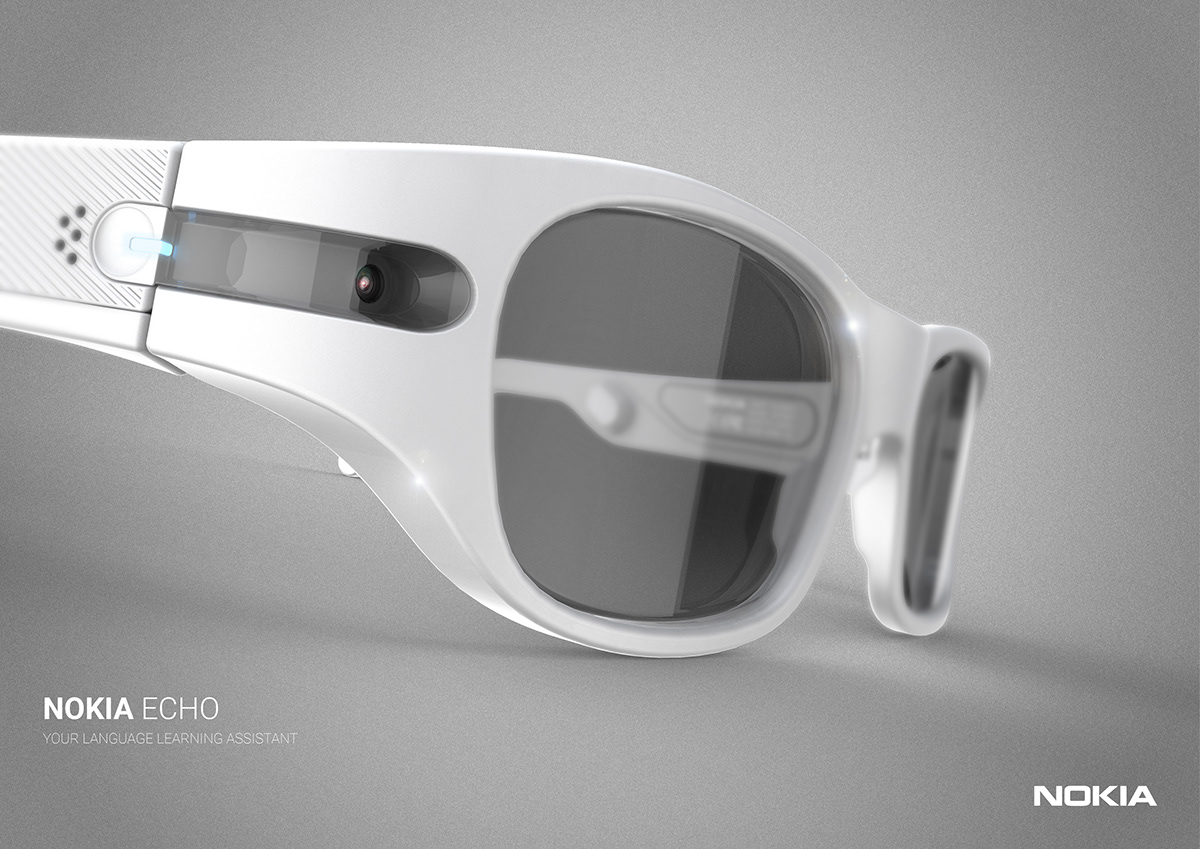

This project is a joint effort with Delft University of Technology and Nokia Bell Labs, both known for their design-based research; with the intention of providing a design proposal that explores the advantages of wearable technology as a medium for improving human intercultural adaptation.
THE POTENTIAL OF WEARABLE TECHNOLOGY

THE OPPORTUNITY FOR NOKIA

Wearable Technology has the potential to provide a SELF-MANAGING technology that works invisibly in the BACKGROUND while ADAPTING in order to anticipate the needs of the communication of an individual.
THE COMMUNICATION VALUE FOR NOKIA
IN A INTERCULTURAL SETTING

The social value of Nokia is about making people feel close to each other, a proof of this is its well-known brand slogan is “Connecting people” (roto et al., 2008). A higher multicultural exposure requires to understand and respond accurately to different social interactions presented during the socialization process among different cultures.
ENHANCING INTERCULTURAL COMMUNICATION
THROUGH WEARABLE TECHNOLOGY

With the assistance of wearable technology, the capacity for intercultural adjustment can be improved on individuals. Language barrier as the focus of this project, due to the fact it is considered as the main channel for direct communication. Hence, promoting intercultural sensitivity that involves personal and cognitive growth.
PROMOTING ACTIVE LANGUAGE LEARNING

Total physical response (Tpr) uses physical interaction to teach a language (Asher 1966, 1969, 2000), it offers a different strategy for language learning. Augmented reality has the possibility to provide both powerful contextual, on-site learning experiences and serendipitous exploration and discovery of the connected nature of information in the real world (Johnson, et al., 2010).
DESIGN APPROACH

Wearable technology might be benefited from the application of fashion thinking, allowing the possibility to experience these devices in similar ways as clothes and accessories (Juhlin et al., 2016). A wearable device becomes an extension of the selfexpression of a human being, with the potential to become a statement of the identity of an individual.
CONCEPT PROPOSAL


PROOF OF CONCEPT
It was conducted two experiential prototypes in order to illustrate how the user will interact with the system. The wearable devices were prototyped through mockups.








Wearable Technology Usability Experiential Prototype: The wearable devices were prototyped through mockups. On one hand, the smart glasses were embodied in a cardboard mockup with an attachable card slot. These cards aimed to represent anaugmented reality vision where information was displayed to the user regarding the object he has recognized. On the other hand, the bracelet was represented by the usage of a regular watch with the implementation of a LED wireless module; which was light it up every time that the participant touch/interact with a certain object as means ofrepresentation for a visual feedback to the user..
Augmented Reality Interface Experimental Prototype: An interactive interface was needed to be simulated, with that in mind, a series of photographs were shot in a first-person perspective; where a user performed different activities/tasks within a previously selected scenario (simulated dining room). These photographs served as a medium to re-create the visual field of a person, and therefore, by means of an image editing software, a camera lens effect was provided to the photos in order to provide a visual experience closer to the way people actually sees through glasses.
NOKIA ECHO

Smart glasses that assists language learning by means of sensorial identification of key objects within a chosen context, providing direct translation and its usage exemplification for simple practical cases, through the implementation of augmented reality technology as a provider of a motivating, entertaining, and engaging learning environment.


Passive Learning: This feature does not encourage the user to perform an oral exercise during the language lesson, its aim is just to only visually present him the information. This setting is envisioned for the users who do not feel comfortable interacting with a speech-based natural interface, and/or considers an audio output as intrusive.
Active Learning: This setting is envisioned for the users who feel more comfortable interacting with a speech-based natural interface and for those who, although might not feel totally at ease using this feature, they require an active learning setting for a faster improvement







By FOCUSING ON and INTERPRETING NOKIA’S IDENTITY, as a designer was possible to provide a UNIQUE VISION

"By Creating a MEANINGFUL product that is EMPOWERING for the users, a NEW PERSPECTIVE can be given to wearable technology as a PLATFORM to be ADOPTED"
THANK YOU !










